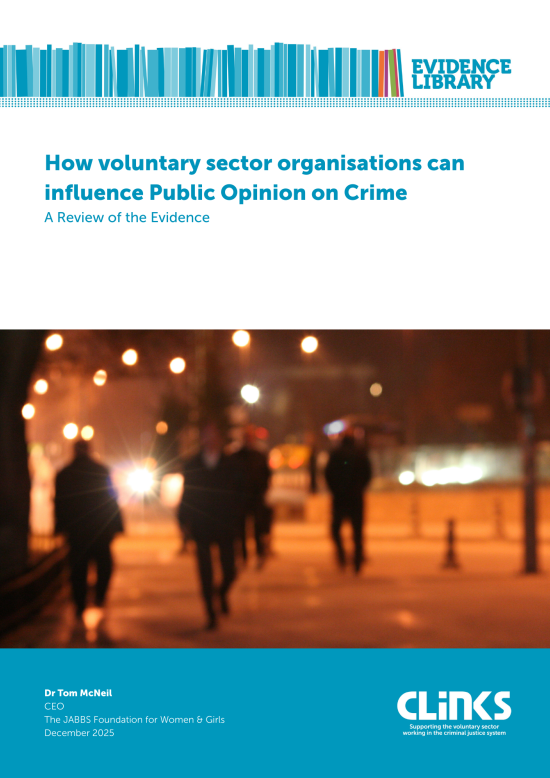The government’s recently published white paper, A Smarter Approach to Sentencing, sets out a number of proposed changes to sentencing and prison releases. For an overview of the paper, see our previous blog here.
Earlier this year we published a briefing on sentencing which outlined three key asks for sentencing reform based on current sentencing trends in England and Wales and the impact on people in prison and the voluntary sector working to support them. One of those asks was to reverse the inflation in sentence lengths that has been taking place.
In this blog we look at the impact of sentence inflation and consider the implications of the white paper’s new proposals that will mean more people are in prison for even longer.
Current sentence inflation and what the government proposes
It is well cited that the prison population in England and Wales has grown substantially over the last two decades and is now the highest per capita in Europe. It has also been extensively documented that the prison estate is significantly overcrowded and that its ageing infrastructure and lack of resources cannot meet the needs of the numbers it holds.
The increase in prison population and overcrowded estate has largely been driven by sentence lengths becoming longer. The average prison sentence has increased by almost two years over the last decade and the number of people sentenced to over 10 years in prison has more than tripled.
The government’s white paper however does the opposite of reversing sentence inflation. A number of its proposals are aimed at ensuring that people convicted of more serious offences are kept in prison for longer, including changes to:
- Automatic release so that those convicted of four years or more for particular violent or sex offences spend two-thirds of their sentence in custody rather being released half way as is currently the law.
- Life sentence tariffs with the intention of ensuring that the minimum time a person sentenced to life must spend in prison before they can be considered for release is increased. This is despite tariffs for people sentenced for murder having already significantly increased over the last decade and already being at the highest they’ve ever been.
- Minimum sentencing for repeat offences (such as drug or weapon related offences). The government have found that minimum sentences aren’t always imposed. So the intention is to strengthen the criteria around this so that more people get at least those minimum sentences.
There are similar proposals for youth justice where children are convicted of serious offences, to ensure that they also spend a longer period of time in custody.
The impact on the voluntary sector working in prisons and the people they support
As increasingly long – and indeterminate – sentences continue to put mounting pressure on an overcrowded prison estate, this impacts the prison environment and the wellbeing of those in prison and by extension, voluntary sector organisations that work to support them.
The poor conditions in prisons have created an increasingly unsafe environment. Self-harm and suicide in custody have been climbing to disturbingly high rates over recent years that vastly outstrip rates in wider society. Levels of violence and drug use are high and people, even prior to the pandemic, were in many cases confined to their cells for most of the day restricting their access to activities.
Delivering services in this context has been a growing challenge for the voluntary sector. Getting access to prisons and prisoners has become an increasing issue with a lack of staff to support people to attend services and ensure they can be delivered safely and in line with security requirements. Our research has also found that when delivering services, organisations were finding that prisoners were presenting with worsening, unmet mental health needs that they were not necessarily equipped to support.
Sentence inflation fundamentally affects the needs of prisoners and the types of services required to address those needs. Providing enough meaningful activity and motivating individuals who are facing incredibly long and indeterminate sentences to engage with services is its own growing challenge.
By implementing policies with the explicit purpose of extending the amount of time people spend in prison, the reforms are likely to exacerbate these issues and certainly not improve them.
What this could mean for the youngest and oldest people in our prisons
As well as having a large prison population, England and Wales has an ageing one. Older people are the fastest growing age group in prisons with sentence inflation playing its part in exacerbating this trend. The number of people aged over 70 was - prior to these new proposals - already predicted to increase by 19% by 2022.
The most common offences for older men in prison are sexual offences and they are therefore likely to be impacted by the changes to release. Yet the prison system is extremely ill-equipped to meet the health and social care needs of this group, so the reforms are likely to create a greater crisis in supporting older people in prison.
On the other end of the spectrum is the impact on children and young adults. We have previously raised concern about young adult men increasingly serving longer prison sentences. A growing proportion are sentenced as children, serving the initial part of their sentence in the youth estate. This has profound implications for their mental health, development and emotional wellbeing including their ability to cope with release. The changes to youth justice sentencing could worsen this issue.
What’s next?
The Covid-19 crisis should shine a spotlight on how unsustainable the situation in our prisons is. The high numbers in prison and overcrowded environment, with many sharing cells designed for one, has exacerbated the risk to prisoners. Older people in prison have been particularly vulnerable. As a result, temporary cells and discontinued sites have had to be rapidly used to manage and prisoners have been forced into a prolonged period of isolation.
With no evidence that longer prison sentences deter people from committing crime or effectively rehabilitate those that do, the priority for sentencing reform should be to prevent less people ending up in the dead end that is prison. We need a focus on reversing sentence inflation and the projected increase in prison population to improve the conditions and safety of prisons. This in turn would enable more effective delivery of services in prison that provide people with the right support for their desistance journeys.
Keep an eye out for our next blog on the sentencing white paper which will focus on its proposals for community sentencing.
What's new
Publications
How voluntary sector organisations can influence Public Opinion on Crime Evidence Library
Latest on X
The role is for a leader from an organisation focused on racially minoritised people, with expertise in service delivery, policy, advocacy, or related areas in criminal justice. Racial disparities are present at every CJS stage. This role ensures these voices are central in shaping policy to help address and eradicate them. Apply by Mon 18 Nov, 10am. More info: https://www.clinks.org/voluntary-community-sector/vacancies/15566 #CriminalJustice #RR3 #RacialEquity

